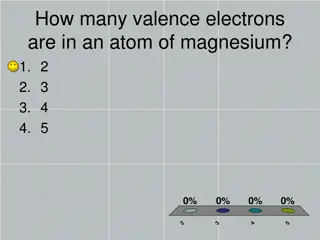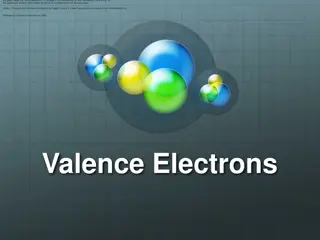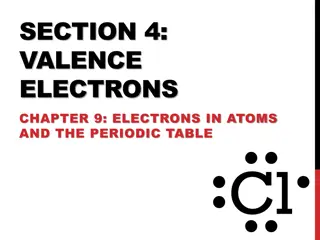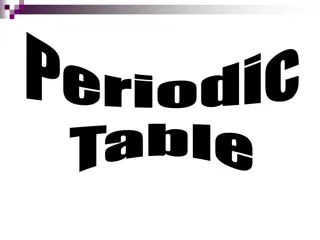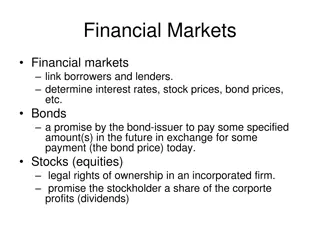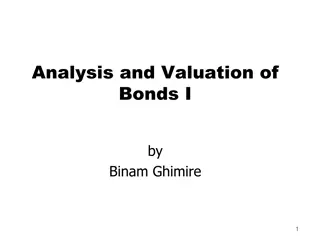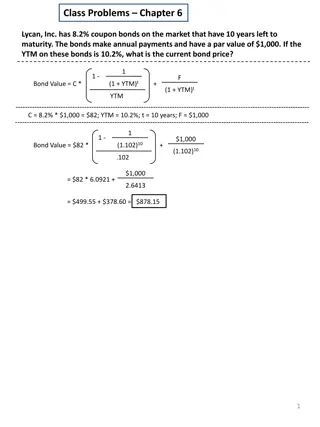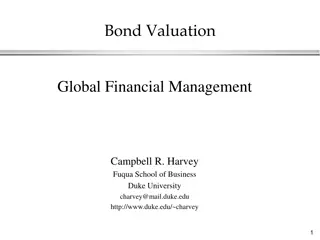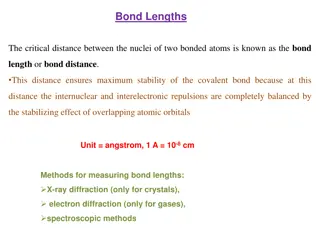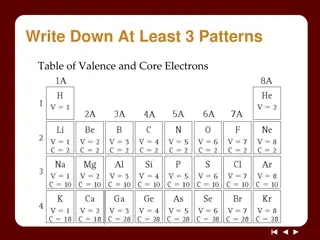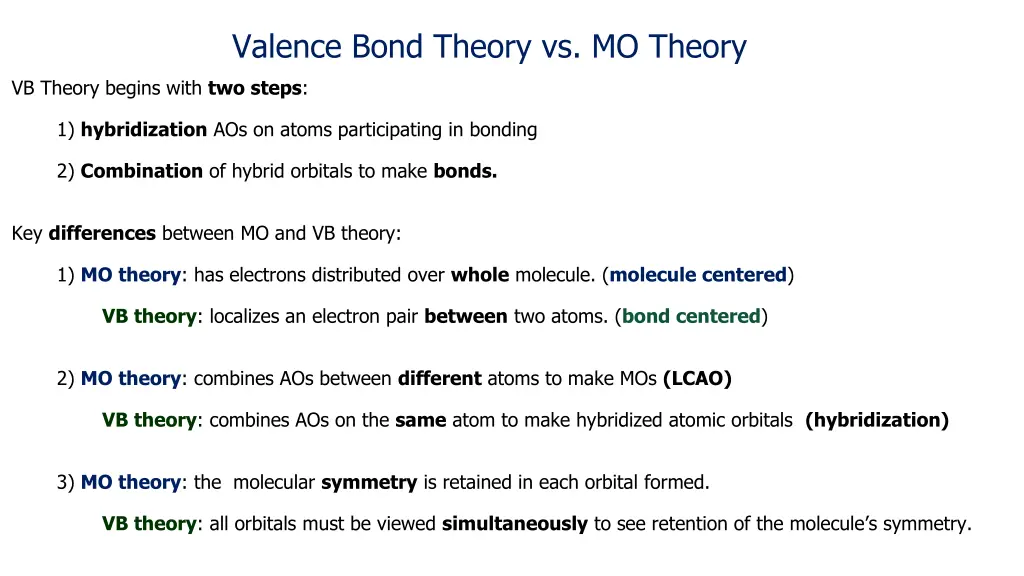
Valence Bond Theory vs. MO Theory in Chemistry
Explore the key differences between Valence Bond Theory (VB) and Molecular Orbital Theory (MO), including their approaches to electron distribution and orbital combination. Detailed examples of VB theory in molecules like BeH2, BH3, CH4, and H2O are provided to illustrate the hybridization process and orbital interactions.
Download Presentation

Please find below an Image/Link to download the presentation.
The content on the website is provided AS IS for your information and personal use only. It may not be sold, licensed, or shared on other websites without obtaining consent from the author. If you encounter any issues during the download, it is possible that the publisher has removed the file from their server.
You are allowed to download the files provided on this website for personal or commercial use, subject to the condition that they are used lawfully. All files are the property of their respective owners.
The content on the website is provided AS IS for your information and personal use only. It may not be sold, licensed, or shared on other websites without obtaining consent from the author.
E N D
Presentation Transcript
Valence Bond Theory vs. MO Theory VB Theory begins with two steps: 1) hybridization AOs on atoms participating in bonding 2) Combination of hybrid orbitals to make bonds. Key differences between MO and VB theory: 1) MO theory: has electrons distributed over whole molecule. (molecule centered) VB theory: localizes an electron pair between two atoms. (bond centered) 2) MO theory: combines AOs between different atoms to make MOs (LCAO) VB theory: combines AOs on the same atom to make hybridized atomic orbitals (hybridization) 3) MO theory: the molecular symmetry is retained in each orbital formed. VB theory: all orbitals must be viewed simultaneously to see retention of the molecule s symmetry.
VB Theory of BeH2 2 p 2 p unhybridzed sp 2( ) Be 2 H 2 s Two hybrid atomic orbitals are made to fit the shape of the molecule, in this case linear, using atomic orbitals of the Be atom! 2px2py 2px2py 2 Be-H "antibonds" The energy of the hybrid atomic orbitals are intermediate between those of the original constituent AO s sp hybrids 1s 1s 2 Be-H bonds The hybrid orbitals combine with other orbitals, atomic or hybrid, creating both bonding and anti-bonding molecular orbitals, which are localized molecular orbitals Unused AO are left behind as unhybridized atomic orbitals
VB Theory of BH3 B 3 H 2 p 2 p unhybridzed 2 2( ) sp 2py 2pz 2py 2pz 2 s 3 B-H "antibonds" To get this shape the 2s with two 2p AO s to generate three equivalent hybrid atomic orbitals sp2 hybrids 1s 1s 1s 3 B-H bonds Combination with the H 1s leads to bonding and anti-bonding molecular orbitals, which are localized molecular orbitalspointing to the corners of a triangle BH3 is trigonal planar with three equal B H bonds
VB Theory of CH4 C 4 H 2 p no unhybridzed orbitals in 2nd shell 3 2( ) sp 2 s 4 C-H "antibonds" sp3 hybrids 1s 1s 1s 1s 4 C-H bonds CH4 is tetrahedral with 4 equal C-H bonds To get this shape, we need to combine all the valence AO s to generate four equivalent hybrid atomic orbitals In combination with the H 1s leads to bonding and anti-bonding molecular orbitals localized andpointing to the corners of a tetrahedron
VB Theory of H2O 2 p no unhybridzed orbitals in 2nd shell O 2 H 3 2( ) sp 2 LP s 2 s The 6 e sfrom O, singly occupy 2 sp3 orbitals and doubly occupy the remaining 2 as LP s sp3hybrids 1s 1s 2 O-H H2O is bent and belongs to the tetrahedral family with 2 BP and 2 LP The s and p orbitals combine sp3 hybrids The 2 sp3orbitals combine with 21s orbital to form 2 O-H bonds
Valence Bond Theory Summary Atoms orbitals are hybridized only if it s necessary to attain the observed geometry and bond lengths. TerminalH s are not hybridized. Second row atoms are hybridized. Geometry determines hybridization: i) Linear (180 ) = sp (s+p with two leftover p orbitals) ii) Trigonal planar (120 ) = sp2(s+p+p with one leftover p orbitals) iii) Tetrahedral (109.5 ) = sp3 (s+p+p+p with no leftover p orbitals) Hybrid orbitals combine with each other to make bonds in which two electrons are localized between two atoms. bonds are made by combining the unused -symmetric p orbitals. 6
Ethane VSEPR theory requires both carbon atoms to be tetrahedral The shape of the molecule, requires that contacts be minimized between the atoms this is known as the staggered conformation Bonding is explained by using sp3 hybrid orbitals on each C. The H atoms bond using their 1s atomic orbitals In all there are 14 electrons or 7 electron pair bonds in the molecule 1 C-Csp3-sp3 single bond and 6 C-H sp3-s single bonds are formed H H H C C H H H = C sp3 = H 1s
Double bonds: ethene If we treat ethane by the VSEPR theory, we find that both carbon atoms are trigonal planar sp2 hybrid orbitals on each carbon atom, which leaves one atomic p orbital unused on each C atom, while H atoms use their 1s atomic orbitals There are 6 e pair bonds in the molecule, 5 in orbitals, 1 in the orbital sp2-sp2 C-C bond, 1 pz-pz C-C bond , and 4 sp2-s C-H bonds The sigma skeleton of ethene The pi manifold of ethene Change perspective to show the bond! 2pz 2pz = C sp2 = H 1s
Triple Bonds: Ethyne The Lewis structure for ethyne (C2H2) VSEPR theory: each carbon atom is linear hence sp hybridized i) C H bonds: combination of an sp orbital from C and a 1s orbital from H. ii) C C bonds: combination of sp orbitals from each C. iii) C C bonds: combination of 2px,y orbitals from each C. 9
Formaldehyde The Lewis structure for formaldehyde (CH2O) . VSEPR theory: Carbon atom is trigonal planar hence sp2 hybridized: i) C H bonds: combination of an sp2 orbital from C and a 1s orbital from H. ii) C O bond: combination of an sp2 orbital from C and a sp2 orbital from O. iii) C O bond: combination of 2pzorbitals from C and O. iv) Lone pairs: remaining sp2 hybrid AOs of O. 10
Bonding in large molecules sp2 sp3 sp2 sp3 sp3 sp3 sp3 sp3-sp3 C-N bond 2 s-sp3 N-H bonds s-sp3 H -S bond sp3-sp3 S-C bond 2 sp3LP s on S sp2-sp2 O-C bond p-p O-C bond 2 sp2LP s on O 2 sp3LP s on O 1 sp3 LP on N sp3-sp2 C-C bond sp2-sp3 C-O bond s-sp3 H-O bond 2 s-sp3 H-C bonds sp3-sp3 C-C bond s-sp3 H-C bonds



